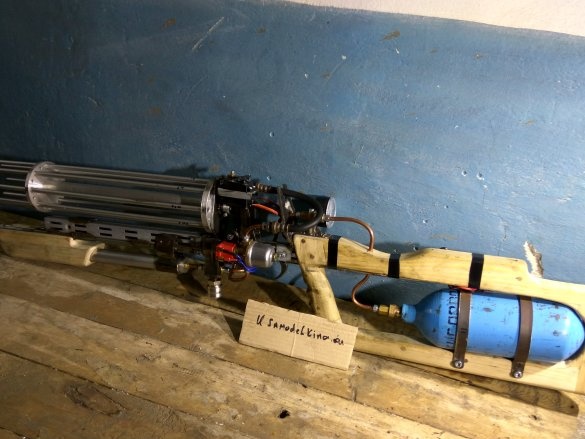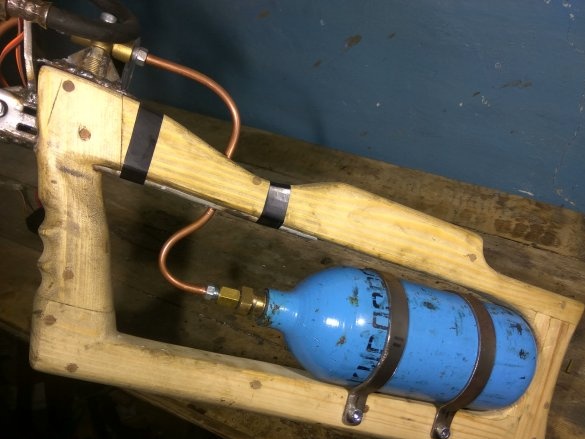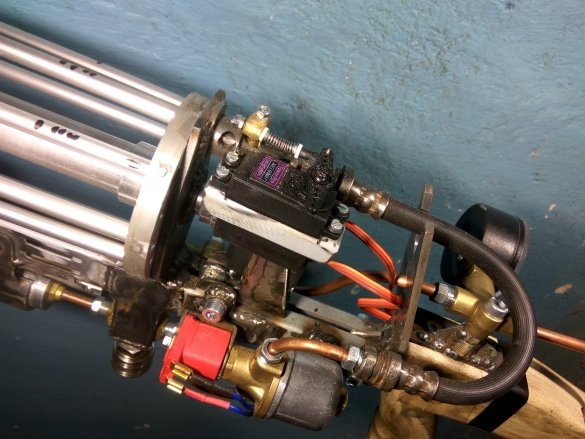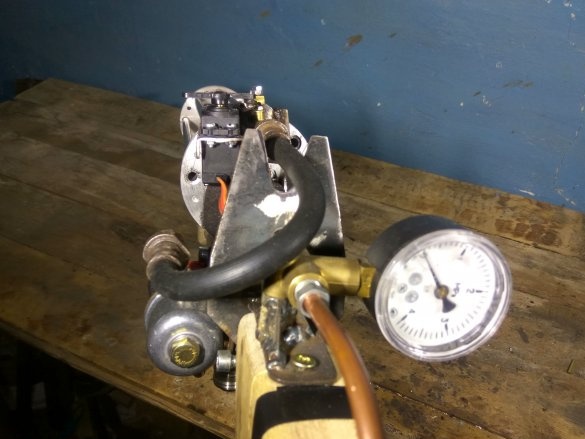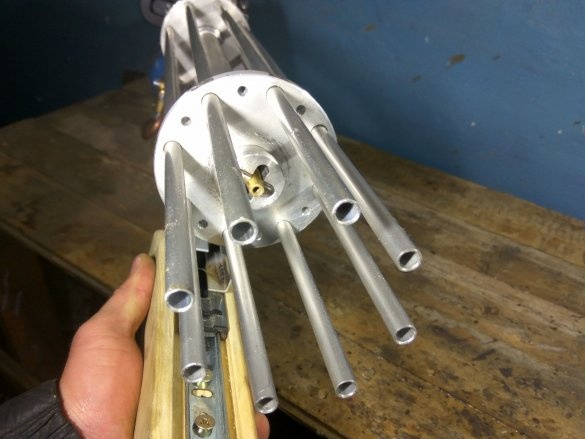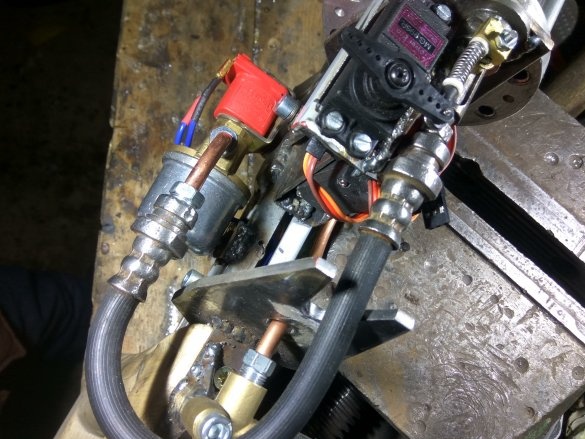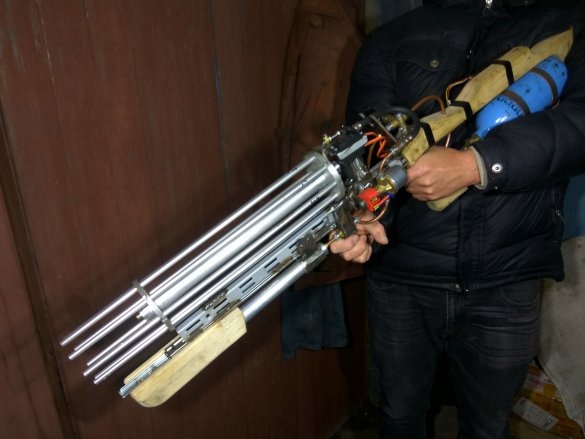The supporting frame is made of a metal profile which is used for hanging shelves.
Stripes 50 centimeters long are welded together with a gap of 5 mm. This is necessary to place the trigger and wires. Two flat parts are welded onto the frame, which act as a receiver; a guide tube on which the drum rotates is welded to one of them.
The stock is made of 20x50 pine bar. The bar is glued on a plane with overlap in the corners and reinforced with dowels. A cutout was made to rest on the shoulder, an "anatomical" handle was formed. Cutouts are made to resemble the original. On the side, on the right side, a sample is made for the control electronics. To pull the wires from the button and valve - an aluminum tube is glued.
The capacity for air is an oxygen cylinder with a volume of one liter. It is attached to the butt with metal clamps, for this purpose M6 nuts are glued to the butt. The air valve is used from the car HBO. All connections - brake copper tubes with a diameter of 6 mm. Brass tees, also from brake systems. Mobile connection - used brake pipe from my Lancer. To control the air pressure in the system, a pressure gauge of 40 atmospheres is installed. Made a pump for manual pumping, like the original.
To pump up to 10 atmospheres with such a small pump is still a pleasure, therefore, a quick-disconnect connection is integrated in the system for quick filling of air.
The drum is made entirely of duralumin. Two parts are machined and drilled for mounting tube-trunks. For accuracy, they were processed by a batch. Trunks - duralumin tubes with a diameter of 8 mm and a wall thickness of 1 mm. The trunks are inserted into the drilled holes and secured by stoppers.
To rotate the drum, a servo converted into a gear motor was used. Serva twists the shaft that passes through the entire drum and, with its tip, engages with cutouts in the drum (originally wanted to make the drum removable for quick reloading, so it’s so confused).
A shutter is made to minimize air loss. Serva moves the stem, which enters the barrel.
The process of firing looks like this: the shutter is closed - the rod is in the barrel, a shot is being fired, the bolt opens - the rod leaves the barrel, the drum rotates, and the shutter closes. The process is repeated.
For tests, for safety reasons, bamboo chopsticks were used for sushi. From a distance of 5 meters, a corrugated cardboard breaks through without problems, an apple breaks through, an aluminum can resists better, but at a pressure of 10 atmospheres some arrows also pass through.
All electronics controlled Arduino nano. Food - a three-can lithium-polymer battery.
The crossbow turned out to be quite weighty, but according to subjective feelings about 7 kg. The balloon takes the lion's share of the weight.
A few more photos, the manufacturing process and tests.


